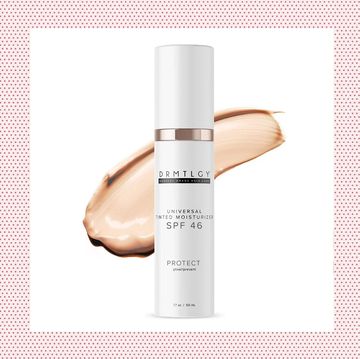No doubt about it, coloring your hair at home saves time and money. If you're still hesitant to give it a try, we've got some good news: Home haircolor kits are easy to use (and their formulas are gentle to your hair). Follow our steps and you'll achieve great results.
Step 1: Select a Color
When it comes to choosing a single-process shade, which will alter the overall color of your hair, you can go lighter or darker as long as you stay within one or two shades of your natural hue. Don't go by the model on the box. It's better to use the color guide on the side, which is a more accurate indicator of the results you can expect based on the color of your hair. If your current hair color isn't pictured, put down the box—that color won't work for you. At-home color kits are best for enhancing your natural color and for covering gray. Don't rely on them for drastic changes like going from brunette to blonde. Visit a salon and let the pros handle that. (Photo by iStockphoto.)
Step 2: Condition Your Hair
Two days before coloring, apply a deep-conditioning treatment to help strengthen hair. This will also give dry or damaged strands an added dose of moisture to help absorb the color better. We love the Aussie 3 Minute Miracle Deeeeep Conditioner ($3.25; at drugstores). Then wash your hair the night before you're going to color, not on the same day (your nails could accidentally scratch your scalp and cause the fresh color to irritate your skin). (Photo by iStockphoto.)
Step 3: Prep the Bathroom
Create an at-home haircolor kit by gathering the essentials: a wide-tooth comb (to help section hair), four large hair clips (to secure sections), a kitchen timer (so you don't need to stare at the clock), a jar of petroleum jelly (to apply along your hairline to protect your skin from staining) and an old button-down shirt (easier than a T-shirt; you won't have to slip it over your hair before rinsing). You can stow these items in a bucket under your sink, so they'll always be on standby when you need a touchup. (Photo by Shutterstock.)
Step 4: Read the Instructions
Sounds obvious, but this step is both the easiest and the most ignored. Take the time to read through the instructions before coloring (don't just rely on the photos). Every kit is different, and the instructions explain exactly how to mix and apply the color correctly as well as how long to keep the solution on your hair. And be sure to wear the gloves that come in the box to keep your hands from getting stained. (Photo by Shutterstock.)
Step 5: Divide & Conquer
A. Using the comb, divide dry hair into four sections: down the middle, then across the center from side to side. Twist and clip each section. (Photo by Keith Lathrop.)
B. Starting with a front section, unclip hair and apply color along the roots. (Photo by Keith Lathrop.)
C. With your gloved fingers, gently run color from roots to ends. Repeat on each section. (Photo by Keith Lathrop.)
Step 6: Set a Timer
Once you've finished applying color to your last section of hair, start the timer for the amount of time indicated on the box. This will ensure that your color has enough time to properly develop. Most solutions are formulated to automatically stop processing after the time indicated, so leaving dye on longer shouldn't change the results—but leaving it on for less time will. (Photo by Shutterstock.)
Step 7: Rinse and Shine
When the timer rings, rinse and shampoo your hair. Always follow up with a deep conditioner; most coloring kits include one. The conditioner will help seal in color and smooth down your hair's cuticle (the outer layer, which lifts up during the coloring process) to promote healthy, shiny hair. (Photo by iStockphoto.)
Get the Results You Want
Remember, hair looks different wet than dry, so always dry your hair after coloring to see the final shade.
If you're unhappy with the result, don't panic! Call the toll-free number on the box and talk to a haircolor expert, who can help you fix the problem. For example, if some of your gray is still showing, they may recommend you shampoo your hair and do a touchup application 48 hours later.
Be proactive: Call and speak to a haircolor expert before coloring to get extra tips on applying that specific kit. (Photo by Keith Lathrop.)












